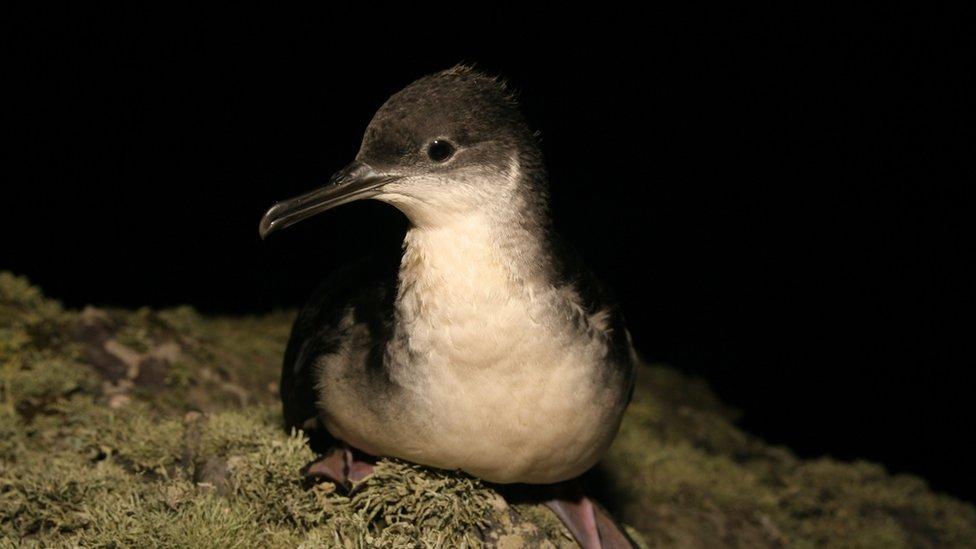Skomer island's Manx shearwater census shows 10% rise
- Published
Natasha Gillies explains the process of weighing the chicks
One of Wales' most important seabirds has increased in numbers by 10%, according to an island census.
Skomer off Pembrokeshire is home to about half of the world's population of Manx shearwater birds.
The count estimates just under 350,000 pairs of the bird, which breed in burrows on the island and then migrate to South America.
The Wildlife Trust of South and West Wales also reported healthy numbers of puffins, razor bills and guillemots.
The research involved scientists from the universities of Gloucester and Oxford and the National Trust and also included checking burrows on the neighbouring Skokholm and Middleholm islands.
Researchers had responses from more than 6,100 shearwater burrows for the census. This projected a population of 349,663 pairs - a 10.6% rise on the 316,000 estimated during the last census in 2011.
The Manx shearwater - seen with a night lens
There is also annual monitoring involving nearly 4,000 burrows.
Joint island warden Nathan Wilkie said: "What makes them quite a distinctive bird is their call, which can be quite eerie - and with the numbers of shearwater and where we are, that can be quite loud."
Fellow warden Sylwia Zbijewska added: "What makes them so extraordinary is they are so clumsy on land but they spend most of their time out at sea and are excellent fliers."
That awkwardness on dry land means keeping the island free of land predators has been seen as key to the shearwater's survival chances.

Its biggest threat comes from black-backed gulls, which means shearwater only return to their burrows to feed their chicks under the cover of darkness.
The breeding pairs only have one egg a year - and the chick grows bigger than their parents before losing weight enough to fly to south America when they fledge.
"They're back breeding now so we're expecting the eggs to be hatching by the middle or end of June," said Sylwia.

Meanwhile, the latest 2019 count for Skomer puffins - the island's best known inhabitant - estimated 24,108 individual birds.
Although this is slightly down on 2018, it is part of a long term trend upwards, which has seen the population almost treble in 15 years.
The most recent surveys of guillemots (nearly 25,000) and razorbills (7,500) showed a 4% rise.

Puffins on Skomer attract visitors on boat trips
The Skomer census was part of the overall Welsh seabirds census, which is managed by Natural Resources Wales.
But the wildlife trust warns against complacency and said there remained concerns about the decline of seabirds globally, including issues around climate change and fish stocks.
There is also research being done on whether micro-plastics are affecting shearwater.
- Published17 May 2019

- Published24 August 2018

- Published17 July 2018

- Published26 June 2018
